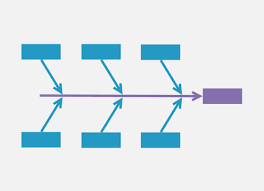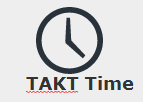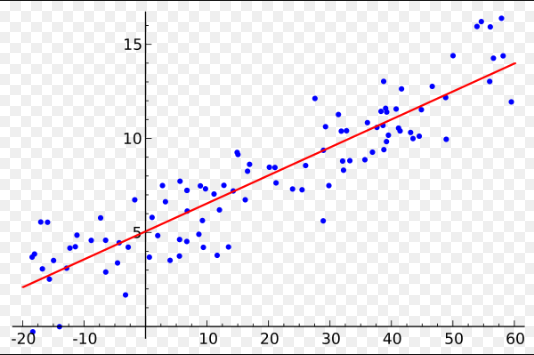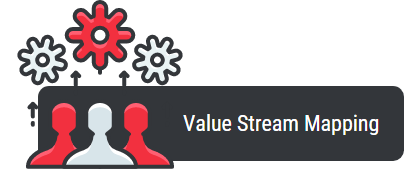
Tools Used for Implementing Lean Six Sigma
Lean Six Sigma is a technique for process improvement and process quality enhancement by eliminating the unwanted or waste from the process and reducing the process’s variation. Lean Six Sigma aims at enhancing the process quality and customer satisfaction. It is a powerful collaborative technique to eliminate the defects from the process, thus reducing the expenditure. Lean Six Sigma is commonly applied to the manufacturing and transaction processes, focusing on product quality and customer values. In this topic, we are going to learn about Lean Six Sigma Tools.
Lean is the methodology for eliminating waste and improving customer satisfaction by streamlining the existing process. Six Sigma is the disciplined approach for reducing the variation in the process and the eliminating the unwanted process to enhance the overall quality of the process or the business to which the lean six sigma practices are applied. There is a number of benefits to using the Lean Six Sigma methodology. The most important benefits are the improved process quality and decreased cost of the process due to the elimination of unwanted waste from the process. In addition, it helps to improve the efficiency and effectiveness of the process as the variation is reduced, and thus a healthy and competitive workforce is implemented.
List of Lean Six Sigma Tools
There are various tools used in the implementation of lean six sigma to a process, including:
1. DMAIC Roadmap
DMAIC Process (a process enhancement guideline) is a blueprint that contains the steps Define-Measure-Analyze-Improve-Control and is to be followed for the execution of Lean Six Sigma process improvement projects; however,,, the results can vary depending on how different individuals execute this roadmap. It is a well-defined and structured approach to eliminate waste and reduce the variation in the process. It provides an effective business solution to the problems. It improves the quality of products and services. DMAIC roadmap helps to reduce the overall cost.
 2. Fishbone Diagram
2. Fishbone Diagram
The other name for the Fishbone diagram is the Cause and effect diagram. Diagrammatically the analysis appears like a fishbone structure. As the name clearly depicts, that cause and effect diagram helps identify the potential causes and effects that tend to produce defects in the process, degrading the process quality and affecting the organization’s goals. It is a categorized approach that targets different causes like the method, people, equipment, materials, surroundings, etc. As a result, it reduces the overall cost of the process.
 3. TAKT Time
3. TAKT Time
The time at which the completed project needs to be finished to meet customer demand is defined as the TAKT Time. It is usually applied to processes like the incident management and manufacturing processes that work upon cycle times, which is captured during the Measure phase of the DMAIC process. Subsequently, during the Analyze phase, the SLA of the incident management is compared with the cycle time, and the tolerance is observed. If the tolerance exceeds or does match the expected tolerance level, then corrective actions are taken to match the tolerance level of the SLA and cycle time.
 4. Regression Analysis
4. Regression Analysis
Regression analysis is a statistical approach for calculating and accepting the relationship between variables. Regression analysis is a very effective tool to determine whether a process input is proportional to the output of a process or not. This data can help in identifying an input to the process where control is essential to deliver an anticipated process-output result. During the regression analysis, an individual may come across issues like correlation, not imply causation, and Multi-collinearity can cause confusion in analysis and risk the validity of its desired results. The possible reason for multi-collinearity in a process in the presence of two or more of the predictors in a regression model is highly interrelated.
 5. Value Stream Mapping
5. Value Stream Mapping
This is an important lean six sigma tool that establishes the flow of resources and information and classifies the process events into a defined number of different segments for identifying the process improvement. This tool targets primarily on identifying and eradicating the non-value added activities in each step of the process; thus, it helps to reduce the wait time between subsequent steps involved in the process. However, 100% efficiency is not possible as the value enabling activities cannot be completely removed from the process. Further, they can be again divided into subcategories to make the process implementation smooth and easy-going, authenticating the value-enabled activities that are non-value added. These improvements in the process help to make the process more compact by reducing the variation.
6. Load Balancing
The name load balancing suggests that it is intended to provide a more effective and constant drift of work within the system. This principle can be fused in the first phase of the DMAIC process: the Design phase to identify the root cause analysis, and during the Analyze phase, to eradicate the blockages in the process. This tool can bring spasms in the system rather than let it operate on shove – relieving the blockages. In addition, the load balancing tool automatically eliminates the inventory dependency of the process. TAKT Time plays a very important role during the development of the system as it helps to decide the correct load balance for the system.
7. Mistake Proofing
Mistake proofing is also known as Poka-yoke. This tool is most commonly applied to the DMAIV processes implied to the upcoming processes in the system or a new system. This tool is used to synchronize the different steps in the process while designing a new system during the DMAIV process to design and implement the new system. The possibilities for abolishing a key cause of defects can be identified by refining and reformatting the system to avoid any situation leading to or causing the error.
These tools are used to identify the defects and give proper ways of defending against the wastes and improving the quality standards. Lean Six Sigma is a globally accepted methodology used for the quality enhancement of different processes.
Recommended Articles
This has been a guide to Lean Six Sigma Tools. Here we have discussed the various tools used in the implementation of lean six sigma. You may also look at the following articles to learn more –

 2. Fishbone Diagram
2. Fishbone Diagram 3. TAKT Time
3. TAKT Time 4. Regression Analysis
4. Regression Analysis 5. Value Stream Mapping
5. Value Stream Mapping
